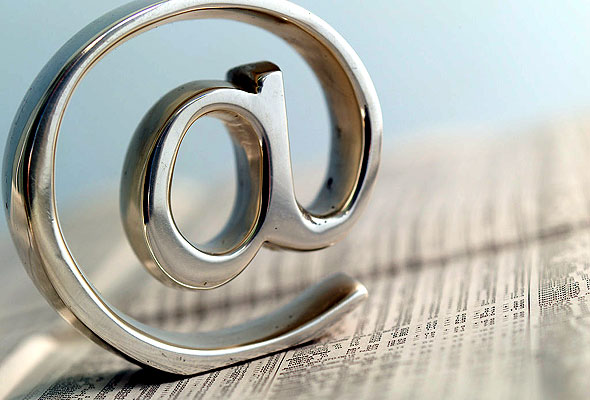Symbols and icons have become more than just characters on a keyboard – they’ve become essential tools for communication and identification. Among these symbols, the at sign, often represented as “@” holds a special place. In this comprehensive article, we delve into the depths of what the at sign (@) is, its origins, its various uses across the digital realm, and its significance in our daily lives. Join us as we unlock the secrets behind this humble yet powerful symbol.
The Origins of the At Sign
To truly understand the @ sign, we must embark on a journey through history. The at sign’s roots can be traced back to the 16th century, where it was used by merchants in Europe to denote units of wine or weight. However, its true claim to fame came in the digital age.
The At Sign in Computing
In the early days of computing, the at sign found its place in programming. It was utilized as a delimiter in email addresses, separating the recipient’s name from their location or domain. The advent of email revolutionized communication, and the at sign became synonymous with electronic messaging.
The At Sign’s Role in Email
An Integral Part of Email Addresses
In the realm of email, the @ (pronounced “at” or “address sign” or “address sign”) sign is the linchpin of every address. It signifies the separation between the recipient’s username and the domain they belong to. For example, in “msmuffet@tuffet.org,” “john” is the username, and “example.com” is the domain, with the at sign acting as the bridge between them.
The At Sign in Email Communication
Emails have transformed the way we communicate, whether it’s for personal correspondence or professional networking. The @ sign has played a pivotal role in facilitating these interactions. It allows messages to find their way to the intended recipients, making it an indispensable part of our online conversations.
The At Sign and Social Media
A Symbol of Connection
As the internet continued to evolve, social media platforms emerged, bringing people from around the world together. The at (@) sign became a symbol of connection on these platforms. Users employ it to tag friends, followers, or celebrities in their posts and comments, ensuring that the right people see their content.
Mentioning and Tagging
On platforms like Twitter and Instagram, using the at (@) sign followed by a username notifies the user that they’ve been mentioned or tagged in a post. This feature has become integral to engagement on social media, making the at sign a powerful tool for recognition and communication.
The At Sign in Web Addresses
A Key Component of URLs
In the digital realm, web addresses are the doorways to information. The at sign has found its way into URLs, particularly in web applications and dynamic content. It plays a significant role in structuring these addresses, ensuring data is sent to the right locations.
The At Sign Beyond the Digital World
A Universal Symbol
The at (@) sign has transcended the digital world and infiltrated our daily lives. It has become a universal symbol, recognized globally, and used in various contexts beyond email and social media.
In the World of Commerce
In the business world, the at sign often precedes a company’s domain in email addresses. It has become synonymous with professionalism and is used in official communications worldwide.
In business, @ is a symbol that means “at” or “each.” For example, it means “each” in “4 apples @ $.35 = $1.40.” Perhaps because it was one of the standard characters designed on typewriters (usually with the upper shift key pressed), @ was chosen to be included as one of the special characters in the ASCII character set that became standard for computer keyboards, programs, and online messaging. In July 1972, while the File Transfer Protocol (FTP) specifications were being written, someone suggested including some email programs written by Ray Tomlinson, an engineer at Bolt Beranek and Newman, prime contractor for ARPANet. Projects Agency Network), the forerunner of the Internet.
Tomlinson…became best known for a brilliant (he called it obvious) decision he made while writing shows. He needed a way to separate, in the email address, the user's name from the machine the user was on. How should that be indicated? He wanted a character that would not, under any circumstances, be found in the username. He looked at the keyboard he used, a model 33 teletype, also used by almost everyone on the net. In addition to letters and numbers, there were a dozen punctuation marks. "I got there first, so I was able to choose whatever punctuation marks I wanted," Tomlinson said. "I chose the @ sign." The character also had the advantage of meaning "in" the designated institution. He had no idea that he was creating an icon for the connected world.
In Creative Artistry
Artists and designers have embraced the (@) sign as a symbol of modernity and innovation. It has been incorporated into logos, branding, and artwork, symbolizing a connection to the digital age.
Conclusion
In conclusion, the at sign (@) is far more than just a symbol on your keyboard. It has a rich history, with roots dating back centuries, and has seamlessly integrated itself into our digital and physical worlds. From its origins as a unit of measurement to its pivotal role in email, social media, and web addresses, the at sign continues to be a symbol of connection, communication, and modernity.
As you navigate the digital landscape, remember the power of the at sign – a simple symbol that has transformed the way we interact and communicate in the 21st century.
